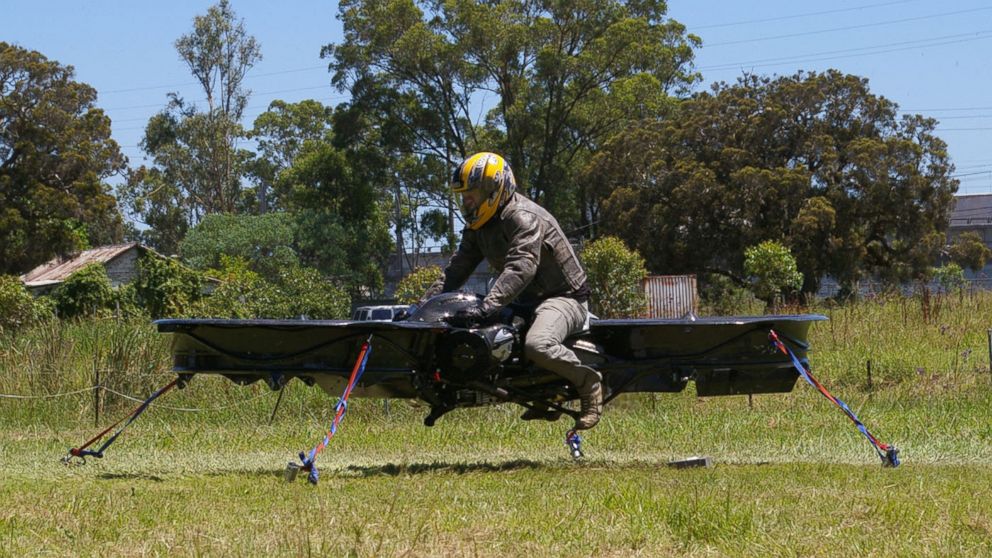Army Looking at Futuristic Hover Bike Technology
Expected completion is in three to five years.

— -- From "Star Wars" to "Back to the Future Part II," hovercrafts have long been part of movie magic. But with a new military deal, the Hover Bike may be more than a Hollywood dream.
In fact, ABC News has learned in an exclusive interview with Army Research Lab representatives that a full-scale prototype is already in the works, with expected completion in three to five years.
The U.S. Army has contracted Malloy Aeronautics and SURVICE Engineering to develop this futuristic technology.
The new frontier involves “three-dimensional capability ... for soldiers,” according to Timothy Vong, the Army Research Laboratory, or ARL, project coordinator representing the U.S. Army’s Research, Development and Engineering Command.
In an interview with ABC News, Vong called the Hover Bike a “Tactical Reconnaissance Vehicle” and said the project is currently in the “proof of concept mode,” testing the feasibility of this technology.
ARL spokesperson Joyce Brayboy made it clear that the Hover Bike, which looks like a motorcycle whose wheels are parallel to the ground, is not intended to replace helicopters as some reports have suggested.
For now, the lab is focused on assessing the capabilities a Hover Bike might provide for the Army down the road. Although Vong would not disclose the contract’s size, which he said began roughly nine months ago, he did say the Army’s investment will increase “incrementally” as milestones are met.
The British firm Malloy Aeronautics, which designed the hovercraft, launched a Kickstarter campaign last August to fund production of a working scale model.
Even before then, SURVICE was talking with Malloy, according to SURVICE Manager of the Applied Technology Operation, Mark Butkiewicz.
He explained the ARL contract is intended to build on the current prototype and “take it to the next level.” Butkiewicz said his firm has provided engineering and Department of Defense support to Malloy, helping to make the contract happen.
Malloy Aeronautics originally developed a prototype of the bi-rotor Hover Bike in 2009, according to Grant Stapleton, director of marketing and sales at Malloy. Vong said that under the contract, Malloy can still pursue commercial uses for the Hover Bike.
Additionally, ARL’s Open Campus Initiative will give the company access to ARL resources.
“Open Campus makes it less cumbersome to partner, collaborate and allow outside organizations to use ARL resources, especially in these early stages of the research,” explained ARL spokesperson Joyce Brayboy.
You can’t have Marty McFly’s souped-up DeLorean quite yet, but his hoverboard getaway may be here before long.




